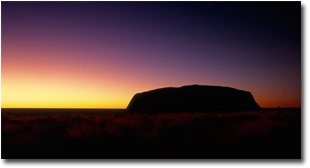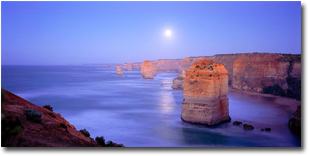The Erosion of Photographer's Rights – A Very Worrying Trend
Text and photography copyright Nick Rains
All rights reserved.
Photographing nature, landscapes, animals etc. is an essentially benign pursuit that harms no one and actively helps the environment by raising public awareness and concern through beautiful imagery.
Right?
Wrong. If current Government policies are to be believed, we are a bunch of wealthy, marauding capitalists who are making a squillion dollars out of pretty pictures of birds and scenery – all of which is owned by the Government; who drew all those lines on the map and named them National Parks anyway?

Uluru - currently all visitors need a AUD20 per day permit for commercial photography of any type at Uluru plus you have to subsequently submit the images to the Traditional Owners for permission to use them. This applies to any photographer whether from overseas or from Australia and penalties could involve confiscation of gear - I kid you not. It should be noted that Uluru is on private land and is not actually a National Park in the common use of the term.
|
|
Basically, if current Government trends around the world continue unchecked it may become, at the very least, quite expensive to do any form of photography in public places, National Parks and just about any place of scenic and environmental value.
As an Australian I can only speak in detail about the situation here. However other countries are displaying worrying trends such as New Zealand where the Department of Conservation is increasingly limiting photographers' access to places like Mount Cook. The US seems reasonably safe for the moment as Public Law 106 allows (thank goodness) small scale nature photography without a permit in most National Parks, but some counties, like Marin in California, are applying high fees to photography in places under their specific control.
There seem to be 4 basic concerns from the Government's point of view.
- Public Liability and Insurance. All public bodies are terrified of claims made in places they are responsible for. If anyone is conducting an activity even slightly outside 'normal' public activities then the official line is to disallow it unless a permit is issued.
- Cost Recovery. The new 'paradigm' in Government thinking. If you cause the administrators to do the slightest bit of extra work, then they consider that they have the right to charge you for their time. Not unreasonable you may say, but what if there is no extra work and they still use cost recovery as an excuse to charge?
- User Pays. Another Government initiative in the last decade or so. If you make use of a public asset then you must, apparently, pay accordingly, you are making use of the facilities provided and are expected to contribute to their upkeep and costs. But what if you hike into a wilderness area to photograph some obscure landform or critter, what facilities are you paying for exactly?
- Intellectual and Cultural Property. This is a thorny one involving indigenous people and the land they have been given by various Governments over history. Often this land is owned freehold and the owners, not unreasonably, wish to charge visitors for access to their cultural and natural resources. Examples include Uluru (Ayers Rock) in Australia, Monument Valley, Antelope Canyon, etc.
Australia is in the middle of a major crisis with respect to photography of National Parks, Commonwealth Reserves and on public land administered by local Councils. Photographers have to dip into their pockets time and time again to be allowed to make images, even if those images are what we might consider small scale and non-commercial. It is this concept of 'Commercial' that is causing many of the problems and I think it is time that the industry redefined this term for Governments to understand more fully.
To my way of thinking 'Commercial Photography' is when there is a Client and a Product. The main reason for making the photograph is to promote a product or service and the photographer is being paid by a third party to undertake the work. Given that this type of photography very often involves more than one person, then it is not unreasonable for the Administrators of the location to consider the impact of such activities on the environment and on other visitors. This would fall under Cost Recovery as someone in the Parks office has to actively take time to consider the implications of the shoot.

12 Apostles - a permit for nature photography in Victoria costs either AUD275 for a year or AUD88 per day. This permit is only valid in Victora, you need another one in NSW and another one in Queensland etc., etc.
|
| Most other forms of photography fall outside this definition of 'Commercial' in the sense that the reason for the photograph to be made is simply the subject itself. I would call this an Editorial type of photography. Often there is only one photographer and, crucially, they usually require no extra access than any other member of the public. There is no issue of impact on the environment and there is no effect on other users of the space. Therefore there is no Cost Recovery justification for permits and fees.
This is the reality that Governments have difficulty understanding. Their definition of Commercial Photography is that if you stand to maybe make money out of something then it is a Commercial Activity and therefore, forbidden without special permission. Here in Australia even the intent of the photograph is irrelevant in Commonwealth Reserves – there is a clause in one set of legislation (EPBC Act 2000) that makes it illegal to sell an image of Kakadu National Park even if you had no intention of selling it at the time you shot it. The penalty for this is, in theory, up to AUD$55,000! This applies to everyone, amateur and professional, Australian or visitor. I know of criminals who have paid lesser fines than this for embezzling billions of dollars.
From the photographer's point of view, it seems ludicrous that someone acting in all respects as a normal member of the public should be singled out by the simple fact that they carry a camera and might make a dollar out of the images they make. A painter may not even be able to paint a picture if this is considered 'capturing an image' although there seems to be nothing to stop a writer making commercial gains out of articles about the Park or Reserve. Even 'sound recording' is forbidden in an Australian Commonwealth Reserve.
What is it about imagery that has caused such a concern in Governments? What happened to support for the Arts and Freedom of Expression?
I wonder if it is anything to do with the misconception that all photographs are worth vast amounts of money. Maybe the Government wants a slice of this action. Well, in the field of landscape and nature photography that pie is mighty small and it is hard enough making a living let alone paying for the privilege. Most photographers that I know are not in it for the money anyway, it's all about commitment to nature and the desire to record and share the wonders of creation. You can count the number of rich wildlife photographers in Australia on the fingers of one foot.
In Australia we have started to fight for our photography rights. In the US, my advice would be to avoid complacency and make sure your existing freedoms are not further eroded by ill informed Government policies.
Editor's Note - Nick Rains is an Australian landscape photographer runs a gallery of his work in Brisbane. Be sure to visit his web site at www.rainspirit.com.au.
Nick Rains - NPN 1005
Comments on NPN nature photography articles? Send them to the editor.


| 


